Types of Anvils: Which is Right for Your Forging Needs?
Abana Chapter
February 21, 2024
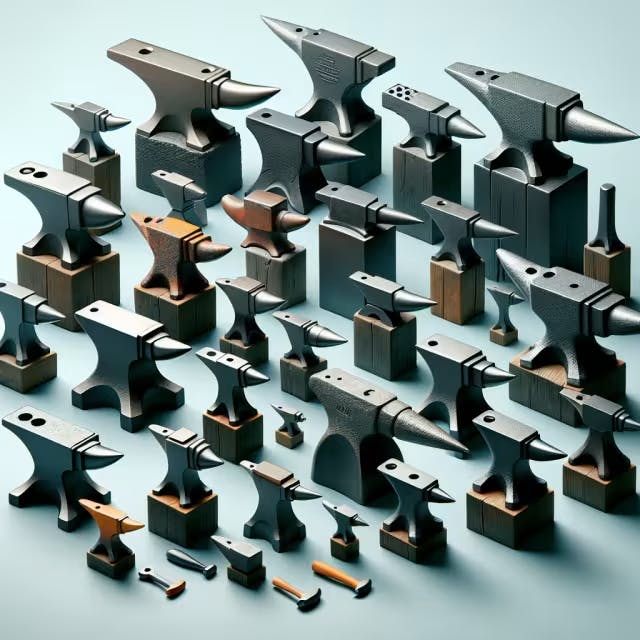
Selecting the right type of anvil for your forging needs is a crucial decision that can significantly impact your metalworking projects. With a variety of designs and materials available, understanding the nuances of each anvil type, from traditional London-style anvils with their characteristic horns and steps to the robust durability of steel anvils, is fundamental. This article aims to guide you through the essential considerations for choosing an anvil that not only meets your specific forging requirements but also ensures longevity and efficiency in your craftmanship.
Key Takeaways
Understanding the different materials of anvils is crucial for selecting the right one for your needs; each material offers distinct advantages.
Cast iron anvils are classic and can be suitable for beginners, but they may not withstand heavy or prolonged use compared to other materials.
Steel anvils represent the modern standard for durability, making them a preferred choice for professional metalworkers.
The size and shape of the anvil should be chosen based on the specific forging tasks it will be used for, with various designs catering to different requirements.
Anvil features such as the horn, step, and face impact the quality of forging, underlining the importance of considering these elements when selecting an anvil.
The right anvil can significantly enhance the efficiency and longevity of your metalworking projects, thereby underscoring the need for a thoughtful selection process.
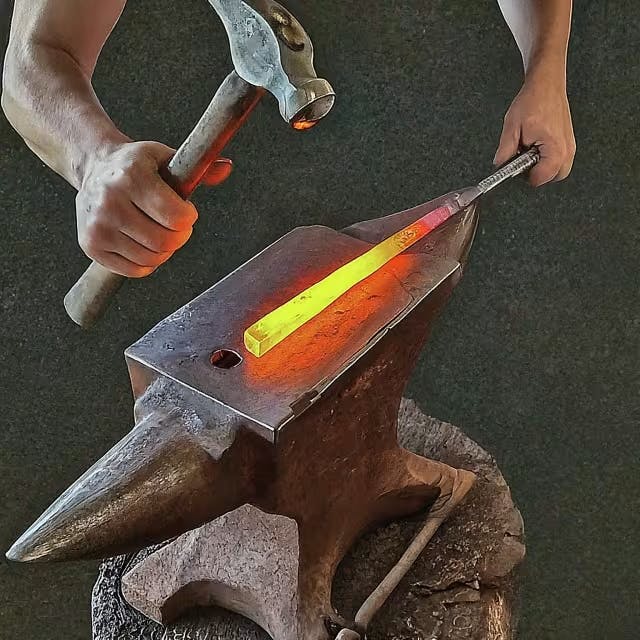
Understanding the Different Materials of Anvils
When exploring the various types of anvils for your forging needs, understanding the materials used in their construction is crucial. Traditional anvils are primarily made from cast steel, prized for its ability to efficiently transfer energy from striking tools to the workpiece. The face of the anvil, its primary work surface, is meticulously smoothed, flattened, and hardened to resist deforming under repeated blows. Notably, anvils also feature a horn for bending operations and a hardy hole for specialized tools.
Recent advancements in the field have introduced innovative materials, such as the "molecular anvils" developed by scientists led by Hao Yan from Stanford. As detailed in their research published in Nature, these anvils use tiny diamond bits and hard specks to apply pressure, twist, and squeeze molecules. This groundbreaking method allows for a greener, more precise, and energy-efficient way of conducting chemistry experiments, breaking chemical bonds, and facilitating electron exchange in ways not possible with traditional methods.
Placement of the anvil near the forge on a sturdy, fire-resistant base is paramount. This setup minimizes heat loss and maximizes efficiency during forging tasks. Modern designs of anvils cater to various metalworking needs, highlighting their versatility and significance in the metalworking field.
The Timeless Cast Iron Anvil: A Classic Choice
When selecting firewood transportation solutions, consider both handheld carriers and wheeled carts. Handheld options, crafted from materials such as canvas, leather, and suede, offer aesthetic appeal alongside practical functionality. These carriers are designed to effortlessly hook onto wrought iron frames, facilitating easy transport of firewood indoors. Their convenience and style make them a favored choice for those seeking to enhance the look of their fireplace area. On the other hand, wheeled carts represent a more functional approach, with their design focusing on ease of movement and increased capacity. This makes them particularly suitable for transporting larger quantities of firewood, significantly reducing back strain. However, it's worth noting that wheeled carts demand more storage space, making them less ideal for smaller living areas.
Feature | Handheld Carriers | Wheeled Carts |
Material | Canvas, Leather, Suede | Various, including wrought iron |
Functionality | Easy transport, aesthetic | Move more logs, reduce strain |
Storage Space | Minimal | Requires more space |
Decor Compatibility | High | Varies |
Ultimately, the choice between handheld carriers and wheeled carts comes down to personal preference, balancing between functionality and the desire to complement home decor. For more detailed information on these firewood carriers and carts, explore options here.
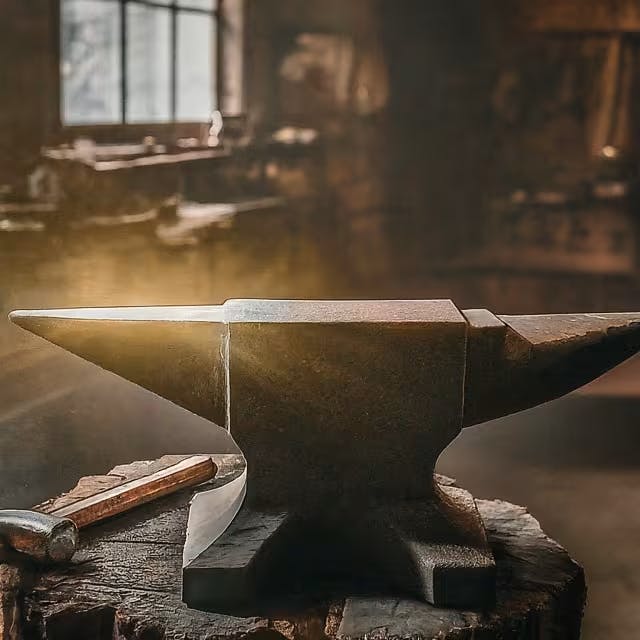
Steel Anvils: The Modern Standard for Durability
Steel anvils have become the gold standard in the modern metalworking and forging community, thanks to their unparalleled durability and strength. These anvils, typically crafted from heat-treated cast steel, offer a reliable surface that withstands the intense conditions of forging. When selecting a steel anvil for your workshop, consider its key features. The hard, smooth face of the anvil provides a stable surface for hammering, while the horn aids in bending and shaping metal. Additionally, the step is indispensable for cutting operations. Holes known as hardy and pritchel are essential for accommodating specialized tools.
A notable aspect of steel anvils is their capacity to efficiently transfer energy from striking tools to the workpiece. This feature underscores the importance of a stable base that ensures effective use and safety during forging tasks. Unlike anvils made from cast iron or low-quality steel, quality steel anvils resist damage even under improper strikes, underscoring their durability and longevity.
For those looking to invest in a steel anvil, assessing its design and placement in your workspace is critical to meeting your specific metalworking needs.
Feature | Description |
Material | Heat-treated cast steel |
Face | Hard and smooth, for general forging |
Horn | Used for bending and shaping |
Step | Essential for cutting operations |
Hardy Hole | For specialized tools |
Pritchel Hole | For punching holes through metal |
This table summarises the key aspects that make steel anvils a superior choice for professionals and hobbyists alike. Their robust construction and tailored design options cater to a broad spectrum of forging requirements, ensuring that every craftsman finds the ideal anvil for their projects.
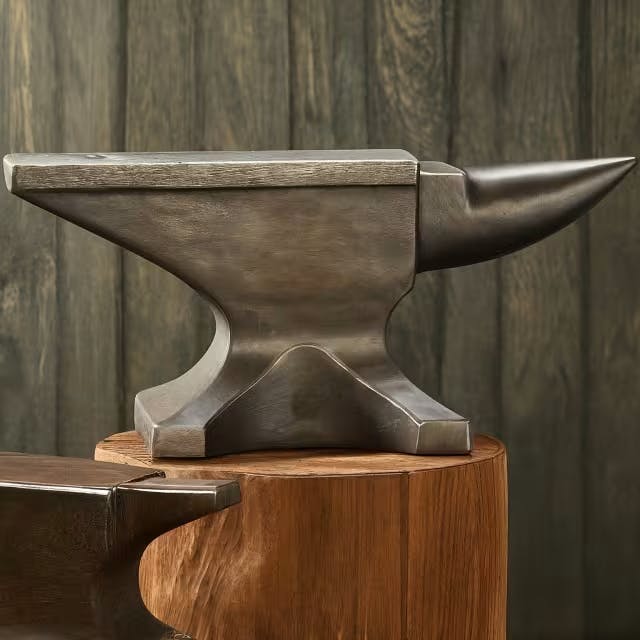
Exploring Sizes and Shapes: Anvil Varieties for Every Task
Choosing the right anvils tailored to specific forging needs involves understanding the various sizes and shapes available. Anvils differ significantly in design, each offering unique benefits for certain projects. Here's a quick guide to help you navigate through your options:
London Pattern Anvil: This is the most common shape, characterized by a flat top with a horn on one end. It's an all-purpose anvil suitable for a variety of forging tasks.
German Pattern Anvil: Featuring both a flat and a round horn, this design is ideal for more complex shapes and is popular among blacksmiths and farriers.
Farrier's Anvil: Designed specifically for horseshoeing, these anvils have a turning cam for more intricate work.
Double Horn Anvil: With horns at both ends, one round and one flat, this type offers versatility for shaping and bending.
Stake Anvil: Smaller and portable, stake anvils are perfect for detailed work and can be mounted on a bench.
Here's a simple comparison to help you decide:
Anvil Type | Best For |
London Pattern | General blacksmithing |
German Pattern | Complex shapes, experienced users |
Farrier's | Horseshoeing and other farrier tasks |
Double Horn | Versatile shaping and bending |
Stake | Detailed work, and portability required |
Each anvil type serves a distinct purpose and choosing the right one can make a significant difference in your forging projects. For a more in-depth look at these options, visit Centaur Forge for detailed descriptions and specifications to match your forging needs. Remember, the right anvil can enhance your technique, improve your output, and make forging a more enjoyable process.
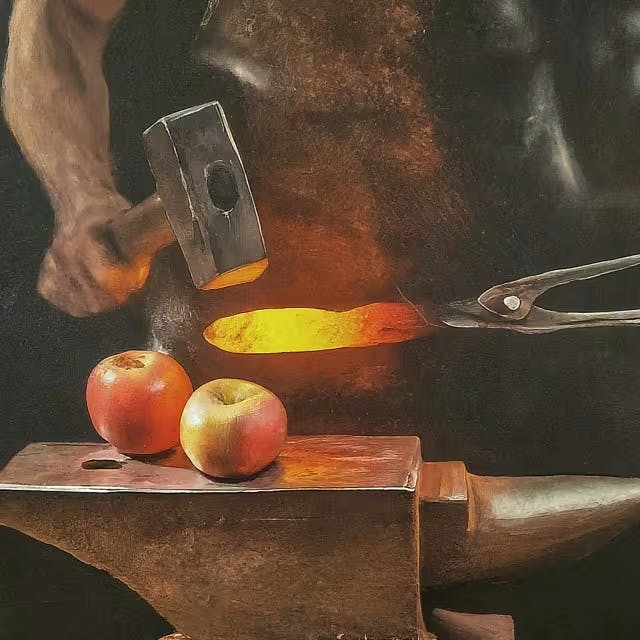
The Role of Anvil Features in Quality Forging
Choosing the right anvil involves understanding its features and how they impact the quality of your forging work. The material of the anvil plays a critical role, with cast or forged steel offering the durability and resistance needed for effective metalworking. Heat treatment further enhances this durability, making the anvil more resistant to wear and deformation. A flat, smooth work surface is essential for precise work, ensuring that each strike translates efficiently to the workpiece without causing unwanted marks or damage.
The design of the anvil incorporates several specialized features to accommodate a range of metalworking tasks:
Horn: Facilitates bending and shaping of metal.
Step: Provides an area for cutting, without damaging the main work surface.
Hardy Hole: Allows for the use of various tools, such as cutters and swages.
Pritchel Hole: Essential for punching holes through metal.
Each of these features adds versatility to the anvil, making it possible to perform numerous metalworking techniques with a single tool. Anvils are set upon sturdy bases, historically wood but now also in steel and other materials, to ensure stability and absorb shock. This base is as crucial as the anvil itself, affecting the efficiency of energy transfer from hammer to anvil to workpiece Anvil types and their importance.
The evolution of anvils has led to designs that cater to specific forging needs, from general metalworking to specialized tasks like blacksmithing or jewelry making. Understanding the features of different anvils and how they can fulfill your metalworking requirements is key to selecting the right one for your needs. By selecting the right type of anvil for your forging needs requires thoughtful consideration of the material and design that best suits your metalworking projects. Whether you opt for a traditional cast iron anvil or a durable steel anvil, or explore the various sizes and shapes available, understanding the specific attributes and features of each can significantly enhance your forging quality and efficiency. Taking the time to choose carefully will ensure that your anvil not only meets your current needs but also serves as a reliable tool for years to come.
Frequently Asked Questions
What are the key materials used in anvil construction and why are they important for forging efficiency?
The main materials used in anvil construction are cast iron and steel, particularly cast steel due to its superior durability and resistance to wear. Cast steel anvils are preferred for their efficient energy transfer, enabling more effective shaping and forging of metal workpieces. The face of the anvil is hardened and smoothed to withstand repeated blows without deforming, while features like the horn and hardy hole support bending operations and the use of specialized tools.
How do modern "molecular anvils" differ from traditional anvils in their application and benefits?
Modern "molecular anvils" represent a significant advancement over traditional anvils, primarily used in metalworking. Unlike the steel anvils which function by transferring energy from striking tools to the workpiece for shaping metals, molecular anvils operate on a microscopic level. Developed by researchers led by Hao Yan, these innovative anvils use tiny diamond bits to apply precise pressure, twist, and compress molecules. This method enables a greener, more efficient means of conducting chemistry experiments. The application of molecular anvils marks a departure towards precision in molecular manipulation, underscoring a leap from physical metalworking to the realm of chemical and material science innovation.
What features should you consider when choosing a steel anvil for your metalworking needs?
When choosing a steel anvil for metalworking, consider its construction material, durability, and design features tailored to your needs. Ideally, opt for an anvil made of heat-treated cast steel for superior durability and resistance to wear. Look for a design that includes a smooth work surface, a horn for bending, a step for cutting operations without damaging the main surface, and essential holes like the hardy and pritchel for using specialized tools. These features ensure the anvil can handle various metalworking tasks efficiently, making it a versatile and valuable tool in your workshop.
How does the design and placement of an anvil in the workspace impact forging tasks?
The design and placement of an anvil in the workspace are crucial for efficient and effective forging. The construction material, typically cast steel, plays a vital role by ensuring durability and optimizing energy transfer from tool to workpiece. Key design features such as a smooth and hardened face, a horn for bending, and a hardy hole for specialized tools, enhance the versatility and functionality of the anvil in various metalworking tasks. Proper placement near the forge on a stable, fire-resistant base minimizes heat loss and facilitates ease of movement around the workspace, significantly impacting forging efficiency and safety.
What are the specific anvils available for different types of forging projects?
Choosing the appropriate anvil for your forging projects requires considering the type, material, and design features that best match your work requirements. Traditional anvils are predominantly made of cast steel, known for their durability and effective energy transfer during metalworking. These anvils are designed with a smooth, hardened face for general forging, a horn for bending and shaping, and include features like hardy and pritchel holes for specialized tools. Recent innovations have introduced "molecular anvils," using diamond components for precision tasks in chemistry, showing the material's evolution in design.
For different forging needs, here are a few types:
London Pattern Anvil: Versatile for various tasks.
German Pattern Anvil: Suitable for complex shapes.
Farrier's Anvil: Ideal for horseshoeing.
Double Horn Anvil: Offers versatility in shaping and bending.
Stake Anvil: Great for detailed, portable work.
Each design caters to specific requirements, ensuring that craftsmen can find the perfect anvil. Steel anvils are recommended for their longevity and resistance to wear, highlighting the importance of selecting a quality piece for your workshop.
How do the features of an anvil, such as the horn and hardy hole, enhance metalworking techniques?
The horn and hardy hole significantly enhance metalworking techniques by offering versatility and efficiency in forging tasks. The horn is primarily used for bending and shaping metal, allowing the blacksmith to create curves and angles with precision. The hardy hole serves as a receptacle for securing various tools like cutters and swages, which are essential for detailed work such as cutting and forming metal. These features, combined with the anvil's durable material—typically cast or forged steel—ensure that it can withstand the high-impact forces of metalworking while providing a stable platform for a wide range of tasks. Together, the horn and hardy hole contribute to making the anvil an indispensable tool in the metalworking field, catering to both basic and complex forging needs.


